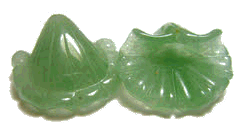
Aventurine
Aventurine quartz often contains small particles of copper which give a metallic shimmer, this is imitated in the aventurine glass used widely in Venetian bead making, it is the glass that gives the stone the name.
The composition of this stone, of light reflecting tiny crystals means that aventurine is found in several colours depending on the crystal type, green aventurine is coloured by green fuchsite mica, orange from yellow mica and pyrite. See also sunstone.
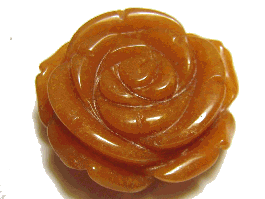
Green aventurine is sometimes described as the 'healer of the heart and soul' and a good balancer of emotions. It has a calming effect and gives focus. Encourages leadership helping to make the 'right decisions' and surrounds the wearer in a blanket of love.
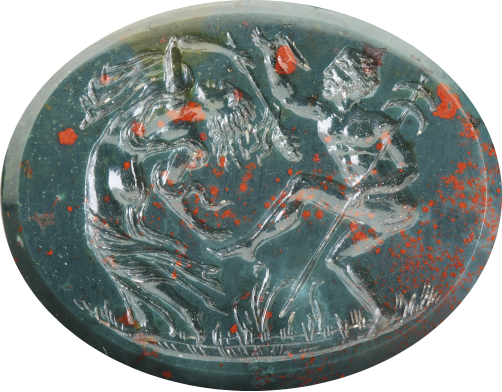
Bloodstone
Bloodstone is so named because of the red spots (from haematite) on opaque green, which were believed to have formed at the base of the cross where Christ was crucified and his blood touched the stone, staining it forever.
For this reason bloodstone was used widely throughout the Medieval Roman Catholic church for the carving of statues and other articles of martyrdom. The stone is most often carved en cabochon or into beads. The green stone with yellow dots is known as 'plasma stone'.
This stone was the stone for March, in old English listings and also known as heliotrope.
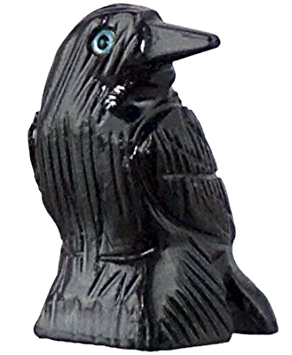
Black Onyx
Old Birthstone for July, Zodiac Stone of Capricorn
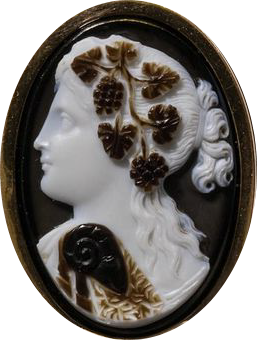
The Greeks told the tale that Cupid cut the fingernails of Venus while she slept. He scattered the clippings and they turned into onyx. Onyx brings sincerity and self-mastery/self control, banishes grief.
Black onyx is often stained, as the natural stone is rare and frequently replaced by black dyed agate.
| Latest Trends | Ordering Information | debbie@silkpixie.com | Delivery & Returns |


